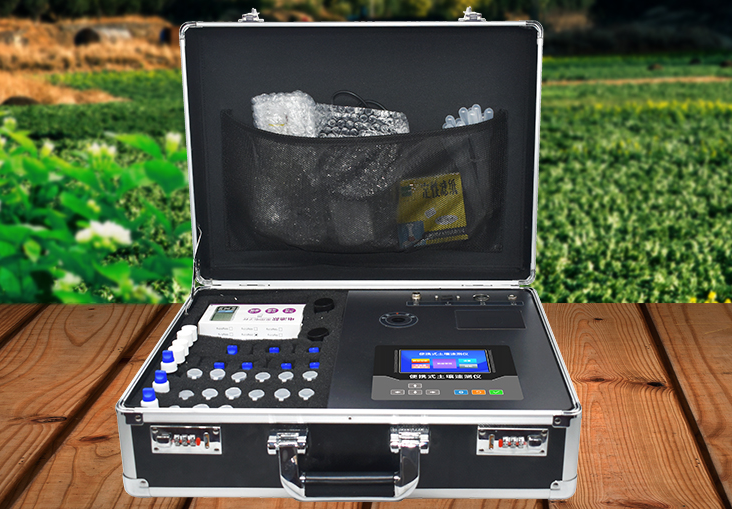Soil plays a critical role in land management, impacting various aspects of our environment, from agriculture to forestry and ecological conservation. Managing soil health and quality is essential for sustainable land management practices. The advent of soil sensors has revolutionized the way we monitor and manage soils, offering real-time data on key soil parameters. This article explores the potential of soil sensors in sustainable land management, their applications, benefits, challenges, and future prospects.

Importance of Soil Management in Land Management:
Soil serves as a vital resource, supporting plant growth, water filtration, and nutrient cycling. Effective soil management is crucial for sustainable land management due to the following reasons:
Environmental Conservation: Healthy soils contribute to biodiversity conservation, carbon sequestration, and reduction of greenhouse gas emissions. Maintaining and improving soil health is essential for mitigating climate change impacts and preserving ecosystem services.
Agricultural Productivity: Soil fertility and quality directly influence crop productivity and food security. Proper soil management practices can optimize nutrient availability, water retention, and pest control, leading to enhanced agricultural yields.
Water Management: Soil acts as a natural filter, purifying water as it percolates through the ground. Managing soil moisture levels and infiltration rates is crucial for sustainable water management, reducing the risk of waterlogging, erosion, and runoff.
Land Rehabilitation: Soil sensors can play a crucial role in land rehabilitation projects, providing real-time data on soil conditions during reforestation, habitat restoration, or post-mining land reclamation efforts. This data helps guide effective soil remediation measures for successful rehabilitation outcomes.
Soil Sensors in Sustainable Land Management:
Soil sensors are advanced technological tools designed to measure various soil properties accurately and continuously. They offer several benefits over traditional soil sampling methods:
Real-time Monitoring: Soil sensors provide real-time data on soil properties such as moisture content, temperature, pH levels, nutrient concentrations, and compaction. This instantaneous feedback allows land managers to make informed decisions promptly.
Precision Agriculture: Soil sensors enable precision agriculture by offering site-specific data. Land managers can identify spatial variability within a landscape and adjust management practices accordingly. This targeted approach optimizes resource utilization and increases efficiency.
Water Conservation: Monitoring soil moisture levels using sensors helps optimize irrigation practices. By applying water only when necessary, farmers and land managers can conserve water resources, prevent overwatering, and reduce the risk of nutrient leaching or runoff.
Nutrient Management: Soil sensors aid in assessing nutrient levels within the soil profile, allowing for precise nutrient application based on crop or vegetation requirements. This targeted approach minimizes fertilizer usage, reduces environmental pollution, and improves nutrient use efficiency.
Applications of Soil Sensors in Sustainable Land Management:
Soil sensors have a wide range of applications in sustainable land management:
Precision Irrigation: Soil moisture sensors help optimize irrigation scheduling, ensuring plants receive adequate water without wasting resources. This technology can be particularly beneficial in arid regions where water availability is limited.
Nutrient Management: Soil sensors assist in evaluating nutrient levels, enabling land managers to apply fertilizers judiciously. This approach leads to improved nutrient use efficiency, reduced environmental impacts, and cost savings.

Soil Erosion Control: Soil sensors can detect changes in soil moisture and compaction levels, indicating potential erosion risks. With this information, land managers can implement erosion control measures promptly, such as contour plowing or cover cropping.
Contaminant Monitoring: Soil sensors can detect the presence and concentration of contaminants, such as heavy metals or pollutants. This capability allows for early identification of contaminated sites, facilitating prompt remediation actions.
Challenges and Future Prospects:
Despite the numerous advantages, soil sensor adoption for sustainable land management faces certain challenges:
Cost: The initial investment and maintenance costs associated with soil sensors can be a barrier to widespread adoption, especially for small-scale farmers or land managers. However, as technology advances and economies of scale come into play, the cost is expected to decrease over time.
Data Analysis and Interpretation: Soil sensor data can be vast and complex, requiring advanced data analytics tools and expertise for interpretation. Developing user-friendly interfaces and decision support system
